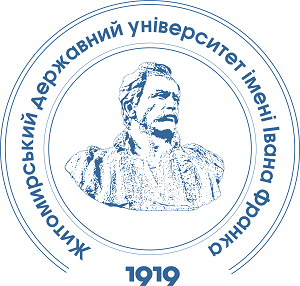INSECTS AS BIOINDICATORS OF TERRESTRIAL ECOSYSTEMS POLLUTION
DOI:
https://doi.org/10.32782/naturaljournal.11.2025.5Keywords:
ecosystem monitoring, zoo-indicator organisms, insects, climate change, forest antAbstract
The article presents the results of a study of insects as bioindicators of terrestrial ecosystem pollution. Among the great diversity of indicator organisms, insects (Insecta) are one of the most widespread taxa. When insects are used to assess the impact of anthropogenic or anthropogenic factors, climate change on the natural environment, and to determine the ecological state of an ecosystem, the following criteria are identified and observed: morphometric changes, color of covers, population characteristics, entomological features, etc. It is common to use ants as bioindicators, as they are an important link in biogeocenoses, contributing to both natural reproduction and enrichment of the phytocoenosis. One of the most valuable zoo-indicators of ecosystem health among insects is the forest ant Iberoformica subrufa, which is widespread in the study area of Kremenets, Ternopil Oblast. They use a complex system of chemical signals to communicate in colonies, search for food, mark and protect themselves. Such a communication system allows them to work effectively in the colony and respond quickly to changes in the environment. A separate advantage of the species under study is the relative resistance of ant colonies to environmental stressors, which lies in their ability to accumulate pollutants and stereotypically respond to them. This makes it possible to use ant colonies for timely monitoring of new threats, including climate change.The main results of observations and studies of insects as bioindicators of terrestrial ecosystems pollution are highlighted. The essence and relevance of zooindication, in particular entomobioindication, are characterized; the peculiarities of using insect indicators on the example of Iberoformicasubrufa are described; the directions, advantages and prospects of using the biological indicatorare determined. The importance and prospects of using the Forest ant as a bioindicator of the stateof biogeocenosis in connection with global climate change and anthropogenic pollution are assessed on the basis of determining the number of nest domes, their height and diameter, morphometric changes of individuals, etc.
References
Кратко О.В., Вербицький О.Г. Біомоніторинг стану довкілля з використанням рослинних індикаторів. Механізм старіння в біології (Mechanism of aging in biology) – 2024 : збірник наукових праць. Київ, 2024. С. 174–178.
Кратко О.В., Головатюк Л.М., Середюк А.О., Кратко С.В. Біоіндикація стану атмосферного повітря міста Кременця Тернопільської області. Technologies, innovative and modern theories of scientists : International scientific and practical conference – 2023 : збірник наукових праць. Graz, Austria, 2023. С. 41–45.
Лавренко С.О., Соболь О.М., Корбич Н.М. Напрями та перспективи використання комах-запилювачів для біоіндикації стану екосистеми та змін клімату в умовах півдня України. Вісник Сумського національного аграрного університету. 2022. Вип. 1 (47). С. 80–90.
Решновецький С.Л., Терепищий С.О. Чорні садові мурахи в соснових лісах Боярського лісництва. Вісник Харківського інституту соціального прогресу. 2003. Вип. 1 (34). С. 23–26.
Фасулаті К.К., Кижаєва К.Я. До вивчення фауни i екології мурашок (Hymenoptera, Formicidae) Українських Карпат. Комахи Українських Карпат i Закарпаття. Київ, 2020. С. 92–99.
Buchori D., Rizali A., Rahayu G., Mansur I. Insect diversity in post-mining areas: Investigating their potential role as bioindicator of reclamation success. Biodiversitas. 2018. Vol. 19. Р. 1696–1702. https://doi.org/10.13057/biodiv/d190515.
Ghazoul J. Floral diversity and the facilitation of pollination. Journal of Ecology. 2006. Vol. 94. Р. 295–304.
Melnyk Y., Bondar O., Sydorenko S., Tsytsiura N., Tryhuba O., Dukh O., Halahan O., Kratko O. Peculiarities of middle-aged scots pine forests development after surface fires in Kremenchuk green area, Ukraine. Forestry Ideas. 2023. Vol. 29. № 2. Р. 272–286. https://orcid.org/0000-0002-3448-8943.
Malovanyy M., Korbut M., Davydova I., Tymchuk I. Monitoring of the Influence of Landfills on the Atmospheric Air Using Bioindication Methods on the Example of the Zhytomyr Landfill, Ukraine. Journal of Ecological Engineering. 2021. Vol. 22. № 6. Р. 36–49. https://doi.org/10.12911/22998993/137446.
Tibcherani M.F., Nacagava V.A., Aranda R.А., Mello R.L. Review of Ants (Hymenoptera: Formicidae) as bioindicators in the Brazilian Savanna. Sociobiology. 2021. Vol. 65. № 2. Р. 112–129. https://doi.org/10.13102/sociobiology.v65i2.2048.






